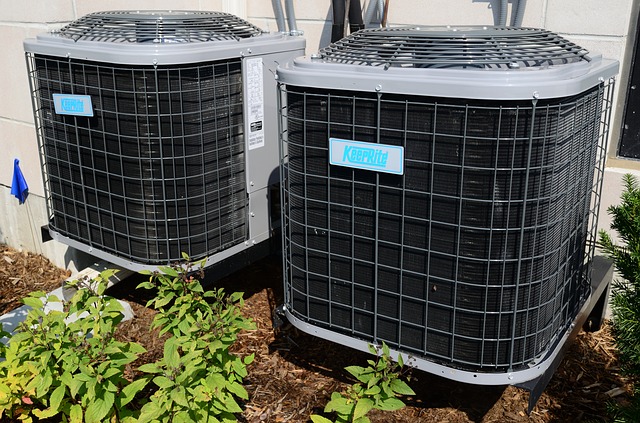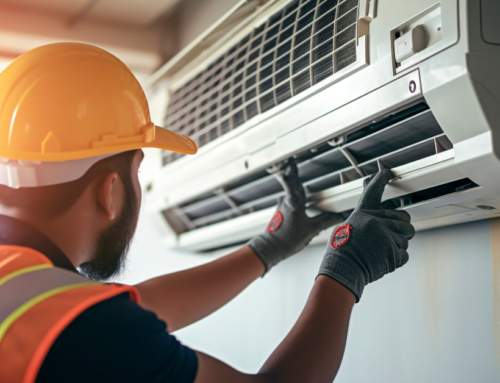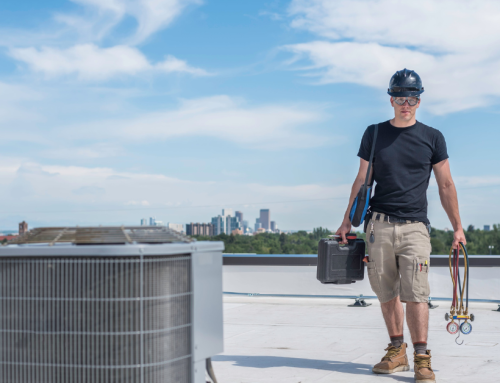Heating and cooling systems need more than just annual HVAC maintenance checkups. There are several maintenance tasks to perform throughout the year to keep your HVAC running at optimal efficiency. Some of these tasks require bringing in a specialist, but many of these tasks can be performed by you, the homeowner.
By knowing which maintenance tasks to do and when you can lengthen the life of your HVAC system while also saving money and energy. You can prevent major problems by following a maintenance schedule. Below is your HVAC maintenance timeline and checklist.
HVAC Maintenance Schedule
Every Three Months
- Replace Air Filters
HVAC air filters need to be changed out at least once quarterly so that air can flow properly through your system. It’s also important to consider that unusual weather factors such as heatwaves or cold snaps can put your system under more stress. In this case, it’s a good idea to change them more often during more severe weather periods.
- Adjust the Thermostat
As the seasons change, you need to adjust your thermostat. In the warm months, set the thermostat to a temperature that isn’t hotter than the temperature outside. Similarly, in the cold months, the temperature shouldn’t be colder than the temperature outside. Not only will this save energy and save you money, but it will ensure that you’re not overloading your HVAC system. If you’re unsure how to program your thermostat, contact Day & Night HVAC experts for assistance.
- Check the System’s Electrical Connections
For the safety of your home and to keep the system functioning properly, check on electrical wires to make sure there are no broken or loose connections. Sometimes all it takes is plugging back in a loose connection, but if you find a more complicated problem, give us a call.
During Fall & Winter
- Bi-Annual Cold Months Maintenance Checkup
Have a professional HVAC expert come in to inspect and maintain the heating system in the fall. During this inspection, the expert will check on the fuel lines, burners, exhaust outlets, condensate drain, electrical connections, heat exchange, and ensure all parts are well-lubricated and working properly.
- Active Furnace Maintenance
In the fall, the humidifier wick in the furnace needs to be replaced and the water supply to the furnace must be turned on.
- Check on Your Carbon Monoxide Detector
Heating systems that use natural gas or oil can put off carbon monoxide gas. When you prepare your heating system for the cold months, it’s also a good time to make sure your carbon monoxide detector is in good working condition. Replace the batteries and hit the “test” button. If your detector is five years old, it may be time to replace it.
- Clear the Outdoor System of Snow & Ice
When it snows, push the snow off that accumulates on your outdoor equipment. A little bit of ice on the system is typically safe, but if large amounts of ice– like blocks or sheets of ice –begin to form, call HVAC experts right away.
During Spring & Summer
- Bi-Annual Warm Months Maintenance Checkup
Have a professional HVAC expert come in to inspect and maintain the air conditioning system in the spring. During this inspection, the expert will check on the fuel lines, fins, pans, coils, refrigerant levels, electrical connections, calibrate the blower systems, and ensure all parts are well-lubricated, clean, and working properly.
- Dormant Furnace Maintenance
In the spring when it’s time to shut down the furnace, you should turn off the water supply.
- Inspect the Refrigerant Lines to the A/C System
This is something you can do without an expert. The refrigerant line is the large copper line, possibly covered by insulation, going into the A/C condenser. During warm months, the line will feel cold if the refrigerant levels are good. Low refrigerant levels can easily lead to A/C failures. If the refrigerant levels are low, you will be able to tell because the line won’t be cold to the touch, nor will it have any condensation on it. If this is the case, it’s time to call us for assistance.
Monthly
- Landscaping Around Outdoor Equipment
To avoid any functional or safety issues, keep the area around the outside units clear of tall grass, branches, and debris. Trim any plants, shrubs, or trees so there is a three-foot buffer between any greenery and your HVAC equipment. Brush away any leaves or pine needles in the fall, and any pollen that accumulates in the spring. Keep any yard/garden tools, lawnmowers, lawn furniture, toys, or bikes a few feet away from equipment as well.
- Inspect & Check
You need to regularly examine your HVAC system for any issues. The following are issues that require attention from an expert:
-
- Strange sounds or vibrations
- Water leaks or frozen coils
- Electrical disconnections that can’t be resolved by simply plugging in
- Damaged fins
- Dirty evaporator or condenser coils
- Warm refrigerant line
- Ice buildup on outdoor equipment
Conclusion
Regular maintenance on your system helps avoid larger HVAC problems that can compromise your daily life. While many of the items on this checklist can be done by yourself, it’s important to know your limitations. When in doubt call a professional. Make sure you hire HVAC experts to perform at least annual maintenance.
Contact Day & Night Mechanical Solutions to schedule a maintenance appointment in the Denver area.



